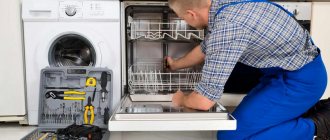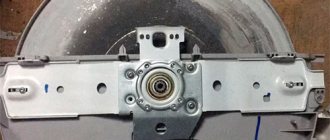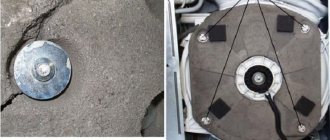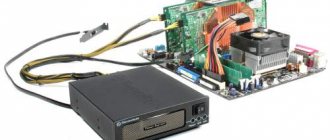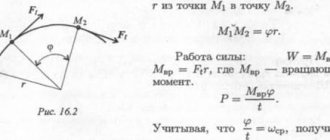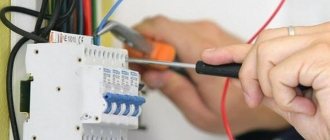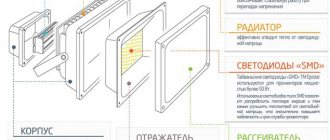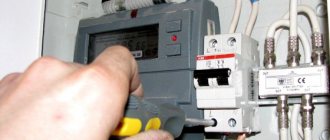When a “dishwasher” turns into a mouse - probable reasons
If for the housewife such a situation is force majeure, then for the ALM-remont specialists it is a normal case. The first step is to find out the cause of the squeaking noise, and then repair the dishwasher.
The reasons for a continuous beep can be very different:
- the filter (inlet or outlet) is clogged;
- the control unit is broken or the firmware needs to be reinstalled;
- there is a leak and the sensor has tripped;
- special products have run out (rinse aid, salt);
- The heating element has failed;
- the hoses are clogged or the pump is faulty;
- bearings “fly”;
Aquastop worked
Aquastop is a protective system that protects against leaks. It is available in many of the latest dishwashers from most manufacturers. For example, Bosch (Bosch), Hotpoint Ariston, Kandy, Siemens, Electrolux. On a number of models, data about the problem and the reason for the system operation is displayed in the form of error codes on the control panel. This makes it easy to determine the reason why the dishwasher beeps in the middle of the program. If the PMM does not have an Aquastop system, diagnostics are needed.
The door is not closed tightly
The device door is equipped with a lock that protects against leaks. If it is closed, the door lock signal is sent to the control module. After which the dishwasher starts working. When the lock is broken, the door cannot lock until it clicks. The module does not receive a signal about blocking; accordingly, the program will not start and water will not be drawn.
You can replace a broken lock yourself. To do this, disconnect the machine from the network, unscrew the front panel and the broken door lock. Then install a new lock and screw the panel back.
Filter clogged
To protect equipment from debris, food, and dirt, an inlet valve filter is installed. It needs to be changed or cleaned periodically. When water is slowly drawn into the machine or does not flow at all, the reason that the device begins to squeak is most likely due to a clogged filter. You can clean it yourself or call a professional.
Before cleaning, turn off the water. Unscrew the hose and remove the filter. It is located at the inlet of the intake valve. Rinse the mesh under running water. If there is a lot of dirt, then clean it with a needle or dip it in a solution of citric acid for 1 hour . The solution is prepared from 30 g of acid and 1 liter of water. The cleaned filter is installed in place and the hose is connected.
Sensor malfunctions
Dishwashers have different sensors that are responsible for monitoring the operation of all stages of the washing programs. With their help, the condition and level of water, temperature are controlled.
Let's look at typical error codes using the example of Electrolux dishwashers, which are caused by a malfunction of the sensors:
- 11 flashes (code ib0) – error in the turbidity sensor, which monitors the condition of the water using a light beam.
The reason is a clogged drain system, a failed level switch, or dirt deposits on the sensor. The problem can be solved by cleaning the sensor from dirt or replacing it.
- 13 blinks (code id0) – error in the tachometer, which regulates and controls the speed of the motor rotor.
A possible cause is burnout of the sensor winding or loose mounting due to vibration. There are several ways to solve the problem. First, check the sensor mounting. Secondly, the tachometer is replaced with a new one. Thirdly, check the resistance on the contacts, which should change when the motor armature rotates.
Water supply problems
The reason why the dishwasher whistles is not only due to breakdown. Sometimes there are interruptions in water supply. There may be no water supply in the inlet hose or water supply. A closed tap will also prevent you from using an automatic wash. All water supply options must be checked.
If the dishwasher is equipped with an electronic display, then along with the signal the system will show an error code. You can find out its decoding from the instructions for a specific model. This will make it easy to understand why the dishwasher beeps.
If such a problem occurs, you can check it yourself:
- power supply;
- floor and PMM for leaks;
- cleanliness of the pump and filter;
- Is the machine level, is there any unnecessary or unacceptable dishes in the chamber.
If after inspection there is no positive result and the dishwasher continues to beep, you should call a service center technician. He will conduct diagnostics and pinpoint the cause of the problem.
What you can do yourself
If the device is equipped with an electronic display, the system will generate an error along with a buzzer signal. You can find out the error code in the instructions for your dishwasher.
Without the threat of completely breaking the unit, follow these steps:
- check that the device is level, there is no overload of dishes or unnecessary items in the chamber;
- make sure that the power supply is ok;
- inspect the machine and floor for leaks;
- Make sure the filter and pump are clean and free of blockages.
The inspection did not yield anything, the “dishwasher” continues to squeak - call a professional! Only a specialist can accurately determine the cause of a sudden “strike”, and he will also correct the breakdown.
How to fix a dishwasher yourself?
There are two typical problems with Bosch PMM models. They are associated with water. Users often complain about the appearance of the E15 code on the display. This indicates that the Aquastop protection has been triggered. But it's not always a matter of leakage. Follow these steps:
- Tilt the PMM body back and look into the pan.
- If there is indeed water accumulated there, drain it.
- Return the float switch to the "Off" position.
Sometimes the cause of operation is incorrect placement of the inlet hose gasket. It may have moved during installation. Therefore, make the connection according to the user manual.
Dishwasher won't turn on
Have you connected your machine to the network, pressed the "Power" button, but nothing happens? The lights on the panel do not light up and no sound signals are heard. Things to check:
- Network wire. Sometimes it bends if it is pressed against the body of the dishwasher during rearrangement. If you notice damage to the insulation, do not make homemade twists. This approach can lead to a fire. Replace the cord immediately.
- Fork. The presence of melts and burns indicates a breakdown. Install the correct element.
- Socket. To check its functionality, connect another device. Works? This means the socket is working.
It is worth checking the surge protector (capacitor). It is located near the engine. A visual inspection should alert you to swelling and burns. The part must be replaced. You can buy it inexpensively in an online store.
Leave problems with electronics and control unit to the specialist. Here you need accurate diagnostics, which is carried out with a multimeter.
Problems with water intake and drainage
In case of such a problem, simple carelessness should be ruled out. So, it's worth checking:
- Is the shut-off valve open? Perhaps it was accidentally blocked.
- Is the inlet hose level? If it is bent or pinched by a foreign object, water will not flow.
When installing a hose with Aquastop protection, you need to monitor its operation. When the system is triggered, the absorbent becomes saturated with moisture, causing it to block the passage. This is a one-time protection, so you need to completely change the hose.
It is important to service your dishwasher at least once every 1-2 weeks.
Maintenance includes cleaning the system from debris:
- Turn off the water supply.
- Disconnect the hose from the housing.
- Take out the filter mesh.
- Rinse it free of clogs.
- Check the operation of the intake valve. Inspect its holes. When debris gets in, the passage becomes clogged, making it difficult for the membrane to move. It does not open and no liquid flows.
If there are problems with drainage, the pump does not necessarily break. Check parts for blockages:
- Open the camera door.
- Remove the baskets from the hopper.
- There is a filter at the bottom.
- Unscrew and clean the part.
- Check the pump impeller. Pieces of food entering through the filter can block its rotation.
- Remove water from the hole.
- Remove the cover by pulling it towards you.
- Wear gloves and remove the clog.
How is the dishwasher equipped?
In order to properly repair broken equipment, you should carefully study its structure. This is the main step in finding solutions to the problem that has arisen. Finding a diagram of a dishwasher is quite simple; it will be either in the technical data sheet or on any website dedicated to similar topics. However, in this case we are not considering the design of the dishwasher, but the cause and effect of the hum. As a rule, a hum occurs when one of the parts fails. In this case, of course, you will have to resort to the help of a diagram in order to easily find the very part that requires repair or replacement with a new one. Often, a hum occurs as a result of increased pressure in water pipes. Due to the rapid flow of water and the frantic pressure on the walls of the bushings and sockets, a rumble begins. An accident and equipment breakdown may occur.
Pressure may arise due to a clogged pipe. The channel can become clogged with both food particles and settling particles of mineral salts and scale. In this case, it is enough to simply clean the clogged parts. If the pressure in the pipes is low, it should be increased using a pump. It is necessary to carefully inspect the circular pump and pressure switch of the machine. If problems are detected, it is recommended to clean them, then wait until the pressure returns to normal and you can continue using the machine.
To find out why your dishwasher is humming, listen when you hear a beeping or humming noise. Record the cycle time after loading the next batch of dishes. You may need to record the times when you hear strange sounds that are not typical of a dishwasher.
What to do if the dishwasher beeps and an error flashes?
If, after turning on or in the middle of the wash cycle, the machine begins to make squeaking sounds and displays an error, you need to:
- find and open the instructions;
- determine the type of breakdown or problem by the error number (or the indicator light);
- if possible, fix the problem.
You can clean the filters yourself, add rinse aid and other products, and turn on the water supply (this can also cause an error). If the error indicates a more serious problem, the only option is to call a technician.
There is no water supply to the PMM
The dishwasher does not always beep, indicating a breakdown. Sometimes the signal notifies you of a water supply interruption. The water supply in your home may have been cut off and that is why the machine cannot start the cycle.
If you turn off a stopcock on a pipe, make sure that the valve is in the correct position. Perhaps you simply forgot to turn on the water supply.
PMMs equipped with a display not only emit a squeak, but also display the corresponding error code on the screen.
To find out what kind of failure the washing machine is hinting at, you need to look at the instructions for the equipment. Each fault code is described there. By deciphering the error displayed on the PMM display, you can find out the cause of the unpleasant sound.
If you hear that the dishwasher beeps immediately after starting, you should first check:
- is there water in the pipes;
- whether the working chamber of the dishwasher is overloaded with excess dishes;
- Is the device level?
Also look under the machine, it may squeak to indicate a leak. If the floor is dry, then check to see if the special products in the tank (salt and rinse aid) have run out, and if the dishwasher’s garbage filter is clogged.
Video
join the discussion
Share with your friends
When buying a frying pan or other utensils, you may see marks printed on its surface. These hieroglyphs, incomprehensible at first glance, indicate how and for what this dish can be used. Read about the subtleties and meanings in the article.
Problems with the power cord
One of the main reasons why your dishwasher may not turn on is problems with the power cord. Just recently our master described a case. He comes to a call, the client complains that a completely new dishwasher refuses to turn on after moving to a new apartment. After transportation, the owner himself took care of its connection. The problem turned out to be the following. The client, while connecting the dishwasher, accidentally placed its body on the power cord, significantly pressing it down.
Having connected the drain and inlet hoses to the communications according to all the rules, he plugged the plug into the socket and decided to start the “dishwasher”, but it did not react at all. After that, he didn’t check anything and called a technician. It turned out that the power cord was broken exactly in the place where it was pressed by the dishwasher body to the floor, and a burnt mark remained on the linoleum. It would seem that the reason is very trivial, and such a problem can be eliminated for pennies, but joking with such things is very dangerous, because a fire could happen. When installing electrical appliances, be very careful!
You can check if the wire is broken somewhere under the insulation layer using a multimeter.
- Set the ohmmeter mode.
- We connect the probes to the prongs of the plug from the power cord we are interested in.
- We measure the resistance and determine whether the wire is intact or not.
Important! If you find a breakdown in one of the wires of the power cord, it is better to change the entire power cable. Soldering and twisting are potentially dangerous and can also cause a fire.
We eliminate the main types of problems
Let's look further into why your Bosch dishwasher won't turn on or turns on but doesn't work as it should. After all, it is possible that the equipment still began to function, but the problems that were the reason for its refusal to work have not gone away.
The dishwashing procedure does not want to start
Imagine this situation: you turned on some mode, all the indicators lit up, you heard the sound of water filling from the chamber, it warmed up, but the washing process itself does not begin. In this case, the likely cause of the dishwasher breakdown may be a clogged filter, which is located at the bottom of the chamber for immersing dishes.
It must be removed, washed thoroughly, and then installed back.
The water is overflowing
Most likely the water level sensor is broken. It is located at the bottom of the appliance, so in order to gain access, you will have to turn the dishwasher over and then replace the water level sensor with a new one.
Important! If the unit is turned off, and the process of drawing water into the chamber still occurs, then the whole point is not in the sensor. It's all about the solenoid valve, which is designed to shut off the flow of liquid. Replacing the valve is a fairly simple task that does not promise any complications.
Overheating or underheating of water
It also happens that the dishwasher does not heat or, on the contrary, overheats the water. In the case of overheating, the temperature sensor breaks down, which entails excessive heating of the water, the production of a large amount of steam, and then the equipment stops working.
If we talk about underheating, then there may be several reasons for the malfunction:
- For some reason the temperature sensor stopped working;
- the water pressure is not strong enough, in particular, the pump or nozzles could break;
- The heating element is faulty, in this case you should check the resistance with a multimeter.
The draining process does not occur
If at the end of washing the water does not want to drain into the drain, then it is likely that the pump is broken or the drain system is clogged, as a result of which your dishwasher does not want to drain the water.
In the first situation, you should check the drain pump for debris, as well as the resistance of the windings. Most likely, the water does not drain from the dishwasher because the pump is simply clogged, although sometimes it may not start even due to water pressure.
If the pump is fine, check the entire drainage system, not forgetting the siphon. It is possible that the hose that needs to be cleaned or the filter located inside the chamber is clogged.
Important! Another fairly common case is when the dishwasher does not drain the water completely. Here, most likely, you placed the drain hose too high, and after draining, at the moment when the pump turns off, a certain part of the water returns back to the chamber.
Touching the body, it gives an electric shock
If your dishwasher is electrocuted, then with a 99% chance we can say that the heating element, that is, the heating element, has been broken. All you have to do is open access to the heating element, and then visually inspect it for cracks and other types of defects.
If your heating element is indeed damaged, replace it with a new one.
The machine does not pick up detergent
If you notice that your dishwasher does not pick up tablets or powder, it is possible:
- nozzle contamination;
- the water is not strong enough, which is why it does not have access to the dispenser;
- breakdown of the mechanism that opens the valve, from which the detergent is washed out.
Important! If the valve does not want to open the water intake or does not close well, the tablet may not dissolve completely, as a result of which the machine does not wash the dishes well.
Extraneous noise is heard
Extraneous noise indicates to us that there has been a breakdown or damage to the bearings of the pump or electric motor, also known as the supercharger. Bearings break because water enters them and seeps through damaged seals. Bottom line - the dishwasher makes noise while it's running.
You will have to not only change the bearing, but also replace the oil seal, otherwise after a certain time this problem will arise again.
Important! The cause of the extraneous noise may well be related to the pump if debris gets into the area of the sprinkler or impeller. Everything here is quite simple, remove the debris and check the impeller for defects. The blades may be damaged, which is why the noise is being made.
Dishes don't want to dry
Some modern dishwasher models are equipped with a drying function for already washed dishes. This process occurs during operation of the fan that was installed inside the chamber.
If you find that your dishwasher is somehow not drying dishes or not drying them completely, but is otherwise functioning well, it is likely that the fan is broken.
Important! Check its winding, then the supply contacts using a multimeter, if necessary, replace the spare part with a new one.
Water leaking on the floor
Well, in conclusion, one of the most common dishwasher breakdowns is water leakage under the housing.
There are several main reasons why water leaks:
- The door seals are in poor condition, resulting in the hatch not closing tightly enough. They must either be changed or cleaned of plaque.
- The pump seal, which is designed to pump water, is damaged. It's best to replace it with a new one.
- The clamps on the water supply and drain hoses are not tightly tightened, which is why leakage occurs.
- Seals may also not be installed in the places where the pipes are connected.
- The water tank located on the side of the equipment was damaged. As a rule, the tank cannot be repaired, so it is immediately replaced with a whole one.
Now you know all the reasons not only why the Bosch dishwasher does not turn on, but also other possible malfunctions. We hope you were able to sort out the situation, identify the real problem, and now you are using working equipment again, leaving yourself more time for hobbies or other recreation.
Dishwashers are a part of the lives of many housewives. With the advent of this technology in our everyday life, it has become much easier to manage things in the kitchen, serve all family members, wash dishes quickly and efficiently, without spending your own energy on it. You just need to load and unload dishes and add detergent. Therefore, the first question that arises if the dishwasher suddenly stops working, for example, after filling with water, is what to do?
If the dishwasher does not start, there are several recommendations that will allow you to try to solve the problem on your own, without turning to specialists for help. And to do this, you first need to understand how this technique generally works.
Main causes of malfunctions and noise
All devices have special sound insulation. It happens that its hum indicates: improper installation of equipment; sudden breakdowns.
It must be remembered that immediately after purchase, the machine is installed on a flat surface with distortions corrected according to the building level. If this is not done, then during operation the parts of the mechanisms coming into contact will make a grinding noise. Blades spraying water or internal partitions may hum. The technician will fix this problem and be able to repair the dishwasher within five minutes at a low cost.
Suspicious noises may occur after several years of constant operation of the equipment. This indicates serious damage due to abrasion of the rotating elements. Most often the following fail:
1. pump internal bearings; 2. washing pump; 3. recirculation pump; 4. electric drive.
Serious faults
As a rule, the motor or pump bearings are damaged. This occurs due to the ingress of water that penetrates through a deformed oil seal. In this case, specialists will replace all the parts with new ones.
An unpleasant sound may be caused by debris accumulated in the sprinkler arm or pump impeller. You can fix this problem yourself by cleaning the mechanism. But it is advisable to immediately check the integrity of the impeller. If there is damage, you will have to purchase and install a fresh part.
If you are unable to determine the causes of the sounds on your own, but all available components, power and water supplies have been checked, the drain hose has been cleaned, and food debris and debris have been removed from the main chamber, then you should contact a specialized company that repairs dishwashers. The master himself will open the case and dismantle faulty mechanisms for pumping and removing water. Complex components that require special diagnostics are dismantled in a service center. In this regard, it is worth preparing for forced transportation of equipment to the workshop. It is better not to do this yourself, since you can damage the expensive boards responsible for heating the liquid and switching programs.
It happens that rust from low-quality dishes accumulates in the drain pump. Its repair is quite expensive, so you need to carefully monitor the internal walls and metal utensils loaded into the device. Professional craftsmen are often faced with a discrepancy between the high water pressure in the central water supply system and the factory parameters of the kitchen machine. This is the source of the continuous hum.
Useful articles on the topic
How to reset dishwasher errors: universal recommendations and useful tips
The vast majority of modern dishwashers are equipped with a self-diagnosis system.
A kitchen “assistant” with a display, in case of problems with operation, displays a combination of letters and numbers. On units without a display, the indicator lights light up and flash in a specific order.
The self-diagnosis system allows smart kitchen appliances to:
- quickly identify the fault that has occurred,
- eliminate it or start a process that prevents more complex breakdowns,
- inform the owner about the problem.
It is impossible , and sometimes impossible, to ignore the appearance of an error code on the control panel of a dishwasher
If you leave the error unattended and simply reset it, you can expose yourself to considerable danger.
What to do when an error code appears
When an error code appears, you need to refer to the instructions for the dishwasher to find its explanation and understand what the reason is and what exactly is wrong with the unit.
Contact VseRemont24 if:
- The instruction manual for your dishwasher “helper” is lost somewhere.
- You haven't fully understood the description of the error.
- You took independent actions to eliminate the problem, but they did not produce results.
- We realized that the dishwasher needs repairs, and you need the help of a professional and experienced technician.
Dishwasher malfunctions can be minor and can be fixed within a couple of minutes, but most of them require complex repairs.
Any external or internal part, as well as the entire unit of the dishwasher, can fail.
Failures of important components lead to the most common malfunctions:
- water leak,
- lack of dialing, draining water,
- no heating/overheating of water,
- insufficient amount of water,
- inconsistency of electrical network parameters with the necessary ones,
- program malfunctions,
- failure to perform individual functions or complete failure of the unit to work, and so on.
A faulty dishwasher works worse and does not wash dishes well. From a technology that saves water and electricity, it turns into an expensive “pleasure”. What is most important is that using a faulty electrical appliance is unsafe for people’s health and lives!
Two ways to reset dishwasher errors
If you have figured out the cause of the breakdown and decided on further actions, you can reset the error code.
There are two easy ways to do this:
- Disconnect the dishwasher from the power supply for 15-20 minutes. This time is enough for the control module to reset its settings and restart.
- Power on for 10-15 seconds . After this action, the equipment settings are also reset.
The recommendations described are suitable for dishwashers of different brands and models.
How to reset all Bosch dishwasher errors
One of the most popular in our country, the German manufacturer of household appliances Bosch, has provided for immediately resetting all previously accumulated errors in its units.
To reset the accumulated errors of the Bosch dishwasher and reboot it completely, you need to:
- Open the unit door.
- Start the “Power on” button.
- Press the 1st and 3rd program buttons at the same time. Hold for 3 seconds.
- Close the door and open it again.
- Start the Reset button. Hold for 3 seconds.
- Close the door and wait for the signal to finish washing.
- Open the door. Turn off the car.
If you doubt the correctness of the actions taken, and do not want to once again expose yourself and the equipment that is irreplaceable in everyday life to risks, contact VseRemont24!
A certified technician will repair a dishwasher of any make and model, no matter what kind of damage occurs to it!
Very noisy when washing
Some dishwashers are equipped with electronic controls, which have a motor-driven electrical switching device on the panel. As a result of the motor running, it may make grinding noises as the dishwasher goes through a cycle. This is normal and not a cause for concern.
However, if your dishwasher is humming and suddenly starts making a grinding sound, open the dishwasher door mid-cycle, wait for the steam to dissipate, pull out the bottom rack, and check to see if there are any objects stuck around the drain wheel (the spinning plastic blades). If the sound continues, remove the impeller and check for debris stuck in the blade area.
Check if there are any objects stuck around the drain wheel
Solution
Before you do anything, you need to carefully inspect the outside of the dishwasher and check its communications. At least 10% of all “stubborn antics” are eliminated at this stage. If the plug is forced into and out of the outlet, overheating and melting are likely. It is better to remove the problematic part yourself after turning off the power supply to a specific wiring branch. But even in this case, it would be better to turn to professionals to avoid additional problems.
After making sure that the outlet is working properly and there is a stable supply of current, you need to check the water supply, valves and hoses. If the indicator starts flashing, you need to press the button to start any program. After waiting 3 seconds, then turn off the power to the dishwasher. Then all you have to do is wait ¼ minute and turn on the device again.
If even after this it does not want to launch the required program, you should abandon further attempts to solve the problem yourself and it is better to contact a specialist.
Video
If the dishwasher does not turn on, it is better to carry out the initial diagnosis of this defect yourself. After the analysis, the confidence in calling service technicians will be well founded.
Your gratitude in the form
of subscriptions to the Zen channel , to our Website , VK group and on Facebook , Telegram channel , on Youtube , on Instagram . Thank you in advance!
